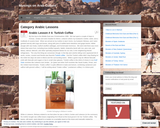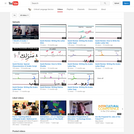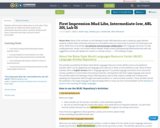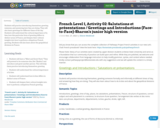
In this activity students will learn how to respond to greetings, how to greet and how to chat shortly with other persons.
- Subject:
- Arts and Humanities
- Languages
- Material Type:
- Activity/Lab
- Date Added:
- 02/25/2021

In this activity students will learn how to respond to greetings, how to greet and how to chat shortly with other persons.

In this activity students will learn how to respond to greetings, how to greet and how to chat shortly with other persons.

This course offers analysis and practice of various forms of scientific and technical writing, from memos to journal articles, in addition to strategies for conveying technical information to specialist and non-specialist audiences. Comparable to 21W.780 Communicating in Technical Organizations, but methods in this course are designed to deal with special problems of advanced ELS or bilingual students. The goal of the workshop is to develop effective writing skills for academic and professional contexts. Models, materials, topics and assignments vary from term to term.

This blog is from an American woman living and working in Saudi Arabia. It includes information about living and working in Saudi Arabia as well as her travels elsewhere in the Middle East. This particular section of the blog includes lessons on Arabic, which are all transliterated. Conversations that are transliterated and translated, vocabulary lists, and cultural information are all included. The lessons include one on bread, one on time and the concept of time, and one on New Year's Resolutions.

In this activity, students will practice asking someone they meet where they are from and their nationality. Students will start by asking each other what country they are from, and then each student will be given a country card at random. Students will then practice asking and answering questions about various nationalities.

In this activity, students will have the opportunity to get to know each other and their lab assistant by sharing summer experiences in a casual setting. Students will share their preferences and express reasons for their preferences as well. Students will also practice describing vacations.

This site houses a large number of very brief audio files in which native speakers say brief, useful, every day phrases in a number of conjugations. Phrases include things like "How much is this?" "How are you?" or simply reciting useful vocabulary and also cover numbers and time. Each phrase is spoken in 8 or 9 dialects from the regions of North Africa, the Levant, and the Persian Gulf. Every phrase is accompanied by a transcript.

Critical Language Service offers playlists with video lessons that explain the material in Alif Baa, Al-Kitaab 1 (through lesson 11), and a series on Egyptian vocabulary. Videos designed for the Alif Baa series focus on stories to illustrate new vocabulary while the series designed for Al-Kitaab explains grammatical concepts introduced in the books, and demonstrate proper pronunciation. They also offer a playlist of 60 cartoon episodes in Arabic.

CultureTalk - Arab World features a very extensive selection of filmed interviews with people from different countries in the Arabic speaking world. While some interviews are in English, the vast majority are in Arabic. Translations and usually transcripts are provided for all non-English video clips. Topics include family, food, education, religious and cultural customs, work, art, sport, travel, etc. The regions covered are the Levant, North Africa, Egypt, and Mauritania, with an Iraqi section on the way.

In this activity students will play a Kahoot! review game to review the content, grammatical concepts, high frequency vocabulary and common phrases in Mandarin Chinese that were learned during the semester.

In this activity, students will work together to interview one another to construct family trees. Students will pair off and ask one another a series of interview questions and draw their partners family tree. Students will then introduce their partners family to other classmates.

In this activity, students will work together to interview one another to construct family trees. Students will pair off and ask one another a series of interview questions and draw their partners family tree. Students will then introduce their partners family to other classmates.

Students will introduce themselves to each other. They will also fill out a Mad-Libs sheet based on the information they know about a partner. Students will learn to describe each other and each other's personality.

Students will practice introducing themselves, greeting someone, and answering how they are doing. They will also learn greetings for different times of the day.

Students will practice introducing themselves, greeting someone, and answering how they are doing. They will also learn greetings for different times of the day. Students will understand the cultural importance of la bise, how this particular form of greeting differs in distinct areas of France, and deepen their cultural insights into how to perform a ubiquitous French greeting. Students will also learn about the geopolitical divisions in France.

Students will practice introducing themselves, greeting someone, and answering how they are doing. They will also learn greetings for different times of the day. Students will understand the cultural importance of la bise, how this particular form of greeting differs in distinct areas of France, and deepen their cultural insights into how to perform a ubiquitous French greeting. Students will also learn about the geopolitical divisions in France.

In this activity, students will have a "Meet and Greet Party." This will help them practice introducing themselves, greeting someone, and answering how they feel. They will also learn greetings for different times of the day.

Students will identify themselves using characteristics in French. Students will ask a partner questions about themselves to identify what the person is like. Students will then describe their partner to others.

In this activity, students will practice introducing themselves and their classmates. The will also use whiteboards to play a quick answer question game.

In this activity, students will practice introducing themselves and their classmates. The will also use whiteboards to play a quick answer question game.